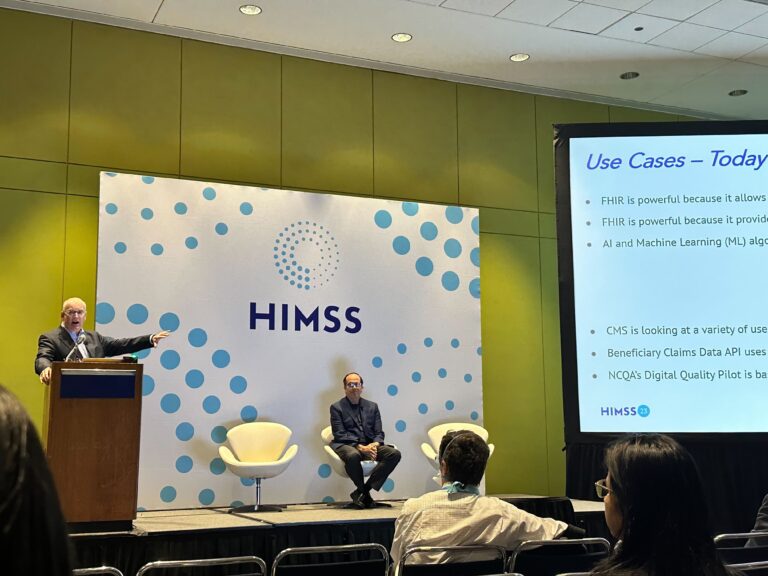Having been to roughly 20 HIMSS Annual Meetings, it was interesting to see the shift from an EHR-focused show to a more broadly-scoped event highlighting the potential for computing and software to improve healthcare and hopefully patient’s health. Not surprisingly this reflects the general transformation of lives with technology. Clearly healthcare has been a laggard. Many dozens of HIMSS exhibitors and sessions highlighted the essential need and opportunity for the FHIR data standard to close the technology gap with the broader economy. Mark Zandi, Chief Economist for Moody’s, gave a keynote where he showed that over the last 30 years while the broader US economy has had a 60% gain in productivity, US healthcare has had ZERO gain in productivity. The more one thinks about automation opportunities in clinical care, the more one realizes the essential role of the FHIR data standard to enable programming with clinical data.
While AI has been along the sidelines at prior HIMSS events, this year the profusion of AI tools popularized by the large language models such as ChatGPT and the ability of end users to play with these tools was present in many discussions at the show. Obviously AI tools are in an exploratory phase and it will be fascinating to see how they evolve. Today these language models are driven by ingesting text but in the near future, expect to see large transformer models (the underlying tech of language models) powered by clinical data analyzed and deeply anonymized at vast scale.
From a 1upHealth point of view, two trends in evidence at HIMSS have been favorable. First, there is a great need for data in highly computable formats. Hard to imagine this being anything but standards-based native FHIR in the cloud. Second, the realization that many of the uses of that data will be to service our increasingly complex policies to allocate care whether it is through quality measurement, prior authorization, ACO’s, MA or other Federal requirements and programs. Dozens of HIMSS educational sessions (including the well attended session Ken Mandl and I gave on using Bulk FHIR) touched on the need to combine clinical and financial data to do this. Providers and payers had many discussions about how to survive and thrive in this new data-driven world.
Finally, HIMSS though a non-profit is still a business. The increasing competition from HLTH events has led HIMSS to broaden its technology outreach and that was reflected in the “Health + Tech” throughout. Exciting times.


